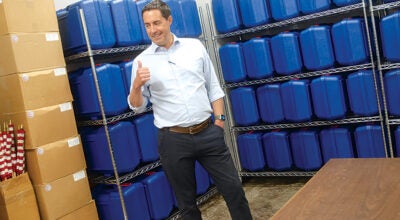Mapping Hunger
Published 10:00 am Friday, February 3, 2017
Children’s Hunger Alliance studying area food needs
The USDA sponsors several different programs to address hunger related needs in American communities. This includes support for school lunch programs, breakfast programs, summer food programs, and what are known as child and adult care food programs.
CACFPs help meet those needs not met by other programs, explained Children’s Hunger Alliance Director of Communication Erica Sevilla, and her organization hopes to use a recent grant to help increase access to funds that sponsor those programs in rural areas.
“One in three children in Lawrence County are living in food insecurity,” Sevilla said. Not only does this mean that they may not be getting enough food. It can also mean they aren’t getting enough of the right kinds of food. While free school lunch and breakfast programs can help address this need in school age children, it doesn’t help younger children, or even parents, who are having a hard time meeting their nutritional needs. It also doesn’t help kids who then go home and may not have a dinner.
One way that CACFPs can help meet these needs, according to Sevilla, is by providing meals after school has let out, similar to the summer food programs that allow anyone in the community to come in and have a meal. Another way is by helping facilitate reimbursement for meals provided by daycare centers.
“A lot of times the (daycare) providers will have the parents send lunch,” she said, “and they figure the parents will feed them what they want them to have.”
But if they wanted to provide their own nutritious meals, that meet USDA guidelines, Sevilla explained, her organization could help get the business reimbursed.
There is a lot that Children’s Hunger Alliance could be helping do, according to Sevilla, but those most in need are, as is often the case, often the hardest to reach.
“Geographically there are a lot of challenges,” she said.
To help address that they took part of a $1.5 million grant from the Walmart Foundation and did a statewide needs assessment to identify those areas where the needs were greatest. Once they had the assessment they knew where the needs were greatest, she said, but that wasn’t enough.
“The next step is to… map where they are living,” Sevilla said. “Plot where kids are in connection to potential community partners.”
Once they’ve done that, they can then work with those partners to begin providing food through the CACFPs.
While that process is still ongoing, Sevilla explained, they are excited for the opportunities that they expect to open once it is completed. Though the timeline is still tenuous on completing the mapping and how implementation will take place, Sevilla said that in the meantime the organization has already been working on other projects, including bringing funding for breakfast programs to Dawson-Bryant High School and Chesapeake Middle School.
“They care about giving their students a better chance at learning,” she said, explaining that various studies show that eating breakfast in the morning can help kids be more focused in the classroom.
In addition to breakfast, she said, they also plan to use grant funding to help with summer food programs and are already preparing for those.
“We advocate for school breakfast and summer food programs,” she said, “and thanks to the Walmart Foundation grant we’re able to offer financial assistance to help community partners expand their reach for breakfast and summer (programs).”





